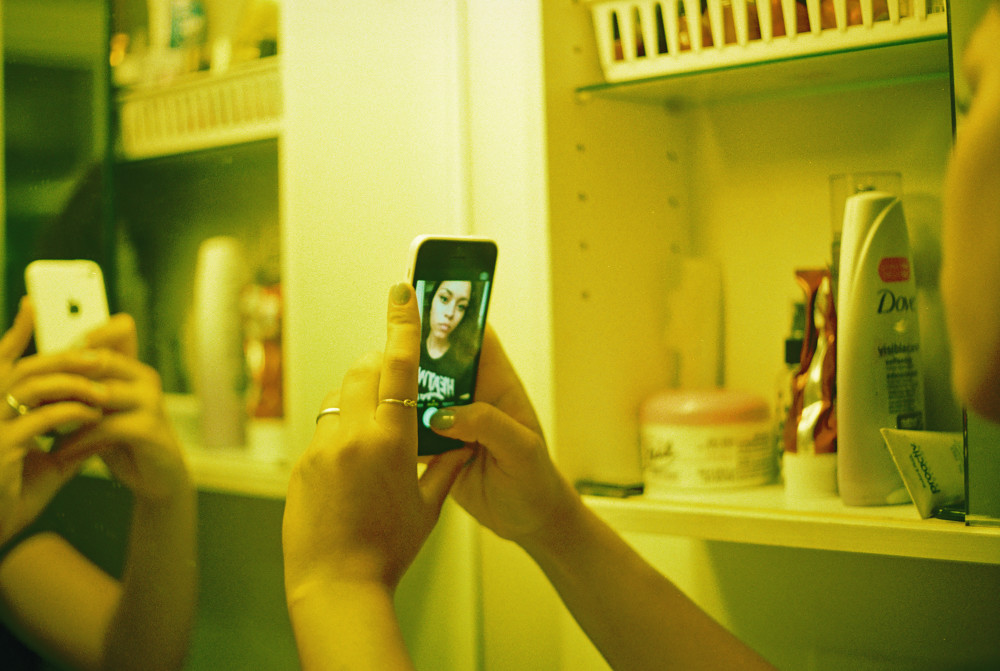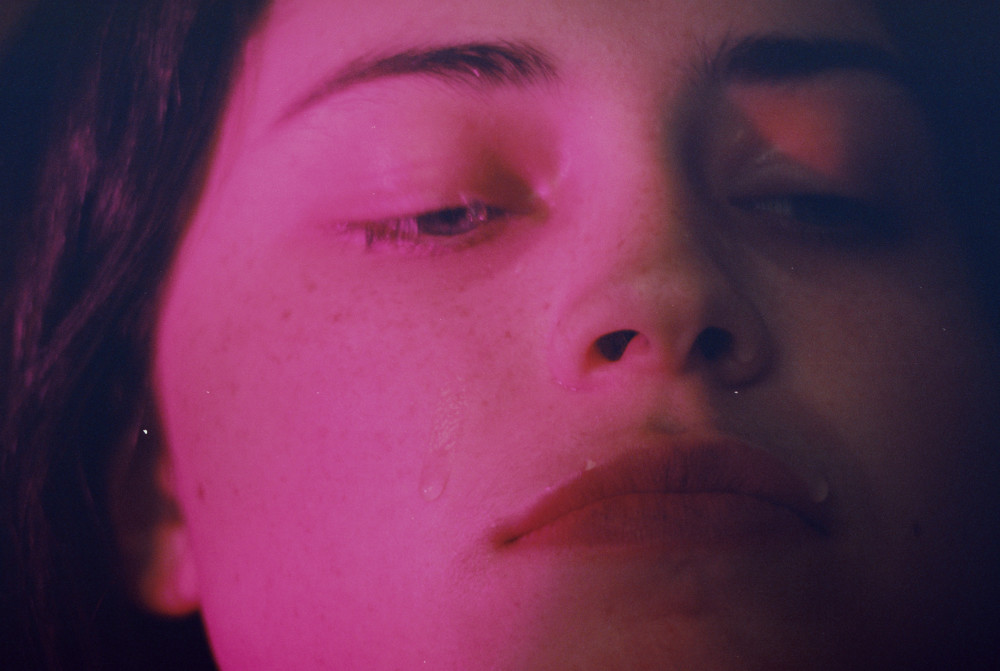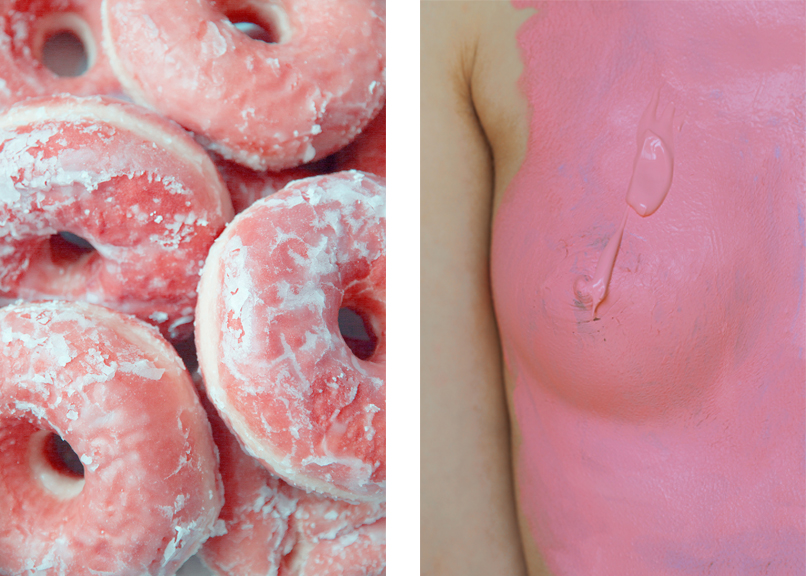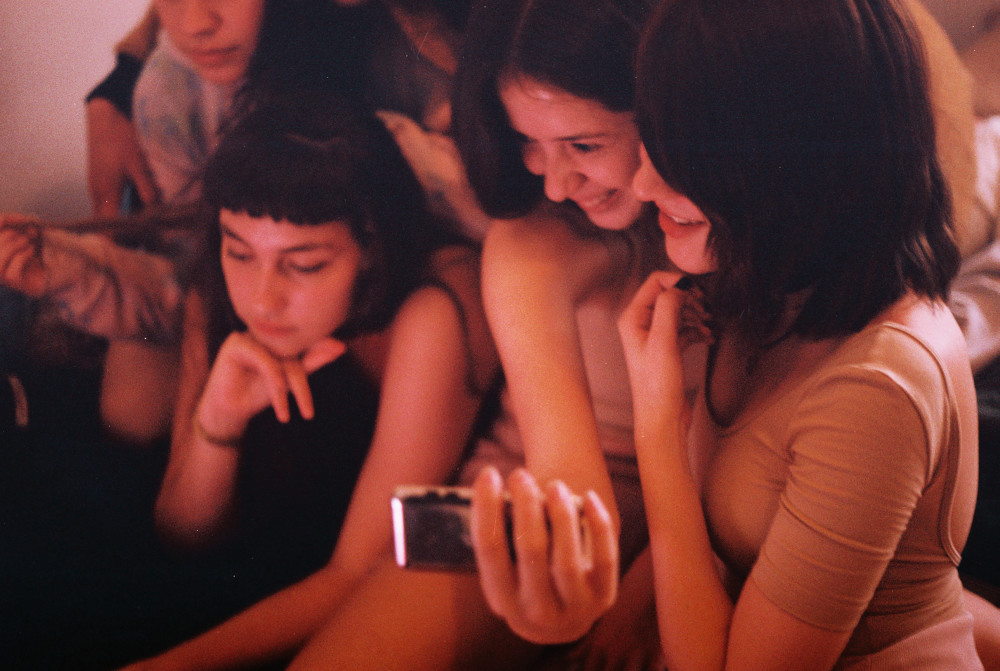Image above: Petra Collins.
NATASHA ZEDAN: You have several collectives, one of which you recently curated a book for. What is the difference between The Ardorous, Me and You, and your Girls and Guns blog?
PETRA COLLINS: It’s all totally different. Me and You is actually a clothing company that is named by my two best friends, Mayan Toledano and Julia Baylis. I don’t design any clothes, I just shoot their lookbooks. As for my Tumblr, I use that more as a tool to save photos that I love. “The Ardorous” was something I started in high school. I was just starting out as a photographer, and I didn’t really see any platforms that I could put my work on, so I just de- cided to create one and to invite other female artists to do the same.
NATASHA: How do the photography and art scenes differ between the US and Canada?
PETRA: I went to an art high school and I went to a university for art. I feel like in Canada, you’re really taught to create art for a cause. I took Criticism and Curatorial Practice at my university and the whole practice is about curating change. We would learn about injustices in the art system. In Canada, it’s a little more about the art. Coming here, there is a full commercial world for art.
 Image above: ©Petra Collins. Courtesy of the artist.
Image above: ©Petra Collins. Courtesy of the artist.
[Check out more wonderful women artists on Musée No. 13]
NATASHA: You’ve gotten to travel a lot in the U.S. for your video series and have spent time in L.A. and New York among other places. Which location provides the creative prime for you?
PETRA: I love traveling across America and meeting girls from different states and suburbs. But I live in New York, and all my friends are here, so for me, it’s a creative hub. All of my friends are in the same field as me, and when we’re hanging out we’re actually working.
NATASHA: It just happens naturally here? PETRA: Yeah.
NATASHA: What conflicts have you encountered that you deal with in your work?
PETRA: I’ve been an artist my whole life. I started the practice of photography when I was really young. Most of the conflicts came from inside, from growing up, and from learning about myself and about the world. It was hard to be taken seriously for a long time, as a young girl. It’s interesting to see how my images have changed since I’ve grown up.
NATASHA: How do you feel your work has changed?
PETRA: It’s definitely become stronger aesthetically. I’ve been able to harness what my aesthetic is. Mental- ly, my view has changed toward my subject. I started when I was 15, so I was shooting girls my own age. Then shooting younger girls at my age, I had a dif- ferent perspective and a wider knowledge of what it means to be a teenage girl.
NATASHA: How do you set up shoots to be more comfortable for your subjects?
PETRA: It’s almost about being invisible. I usually shoot people in their homes or at parties. I don’t tell people what to do, ever. I let things unfold. I try to remain a spectator.
 Images above: ©Petra Collins.Courtesy of the artist.
Images above: ©Petra Collins.Courtesy of the artist.
NATASHA: Do you feel that your work is comforting for young girls to see among the photoshopped im- ages they see in magazines?
PETRA: I hope so. It’s hard growing up in a world where you don’t feel represented, and you don’t see your image anywhere. That’s what I try to do: create im- ages for people who don’t see themselves in the world.
NATASHA: How do you determine which companies you work for, considering the negativity toward women the fashion world can breed?
PETRA: It’s a very fine line. I don’t think I would ever do anything for Victoria’s Secret, but there’s always something to gain when a company that has been, or could have been, problematic hires someone who is trying to better the world. For me, it’s always a little bit of a win every time I get to work with a company that hasn’t done anything like I do before. It’s like slowly inserting that message into those companies, and the mainstream in general, who wouldn’t nor- mally promote it.
NATASHA: You preach a lot about women being em- powered and owning their bodies. How do you feel about Richard Kern’s near-pornographic work, especially having posed for him and worked as his cast- ing director?
PETRA: To put it bluntly, what he does is pornography. I really like him as a person, so I guess I’m biased. The one thing I’ve always liked about his work is that he casts literally any girl with any body type, which I find really cool. That’s something you don’t really see in male-heavy sexual photography. I’ve always loved that about him. He’s definitely not Terry Richardson.
 Image above: ©Petra Collins. Courtesy of the artist.
Image above: ©Petra Collins. Courtesy of the artist.
NATASHA: You’ve worn many hats in your career: photographer, artist, casting director, and now, film- maker. How did you adapt into each of those roles?
PETRA: Film is something that I’ve always really want- ed to do. It’s sort of my first love. That’s why I picked up photography, because it was an easier, less expen- sive way to tell a story. I’m still learning about film. It’s a totally different world. It takes so much longer. I definitely have to learn patience. In my ideal world, I would make a movie in a week and have it out right away, but it takes, like, a year. I’ve always been a multimedium artist. I think it’s really important, if you’re focusing on one medium, to experience others, because it always strengthens your main focus. It wasn’t even about adapting, it was just something I naturally liked doing because it’s all part of creating images.
 Images above: ©Petra Collins. Courtesy of the artist.
Images above: ©Petra Collins. Courtesy of the artist.
[Check out more wonderful women artists on Musée No. 13]
NATASHA: On “Girls and Guns,” there’s a couple photographs of you in bralettes on your blog cry- ing. Are these part of a larger series? Or are they just something that happened?
PETRA: They’re literally just things that happened. I like being open about my life, and I don’t like to censor it. I think it’s important to see that someone is multifaceted, and has emotions and does look like shit, it’s just another selfie that I post. I think they’re cool to see.
NATASHA: There is a focus in your work, especially in Discharge, on selfies and self portraiture in this generation. Where do you see the boundary between selfie and self-portrait? What do they mean to you?
PETRA: I think selfies are a whole new, exciting way, especially for women, of becoming the creator and the subject of imagery. It’s such a cool medium, that we’re able to create our own stories and capture our own images. There’s always a weird negativity about self- ies when it’s just a normal thing, and I think it’s a good thing to be able to mold your own image instead of having someone do it for you.
 Image above: ©Petra Collins. Courtesy of the artist.
Image above: ©Petra Collins. Courtesy of the artist.
[Check out more wonderful women artists on Musée No. 13]
NATASHA: If aliens landed on the moon and wanted to understand teenage girlhood, what movies would you recommend?
PETRA: The first one’s “Carrie.” I just saw “It Fol- lows” and I really loved it. Not that it would explain anything, but I think it was a very awesome portrayal of teenage girlhood, where the main character was taken seriously. Did you see that movie?
NATASHA: No, I haven’t. It’s on my “to watch” list.
PETRA: It’s really, really good. Everything was per- fect. And the main character was treated as a proper protagonist. So, maybe I would say those two movies. They’re kind of weird choices.
NATASHA: Where do you see yourself five years from now?
PETRA: Hopefully, making a movie. I would really love to do that. It might take a bit longer, but that’s something that I’m really working towards, a feature length film.
NATASHA: Would you film it, or direct it, or would you write as well?
PETRA: I’d like to direct it, but I’d also like to have a hand in the writing. I don’t really write, but I’d like to have a hand in the thought of it.
NATASHA: Do you feel a certain responsibility to women as a female artist? Do you even consider yourself a female artist? Because that tends to be a little bit of a taboo with women.
PETRA: It is definitely a taboo. I was just talking about this yesterday. I always feel that responsibility when people force me to feel it. When people are like, “You’re not doing enough.” It’s a crazy standard that we put on each other. I mean, I don’t put that on anyone but when you’re representing a cause, there are always people who tell you that you need to do more. Sometimes, I feel guilty that I’m not doing enough, then I have to sit and say, “OK, you’re one person.” A lot of my work takes place in the realm of pop culture. I’m not a savior. I’m just me, and I’m just doing my thing. A lot of people feel very entitled to other people’s lives. I always have this back-and-forth, where people are angry that I don’t do what they want. But I’m not a teacher. I’m just me.
 Image above: ©Petra Collins. Courtesy of the artist.
Image above: ©Petra Collins. Courtesy of the artist.
Check out more wonderful women artists on Musée No. 13


